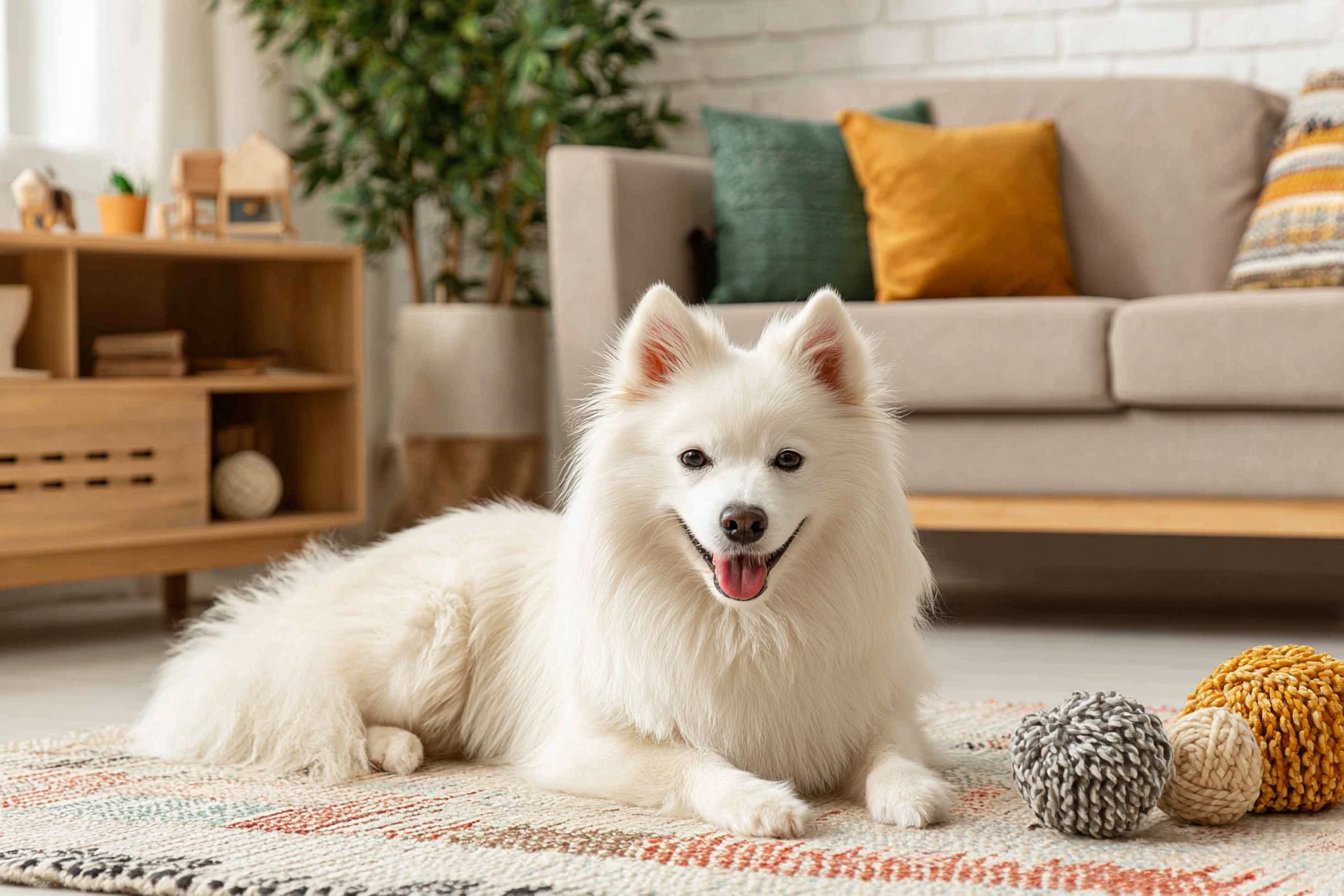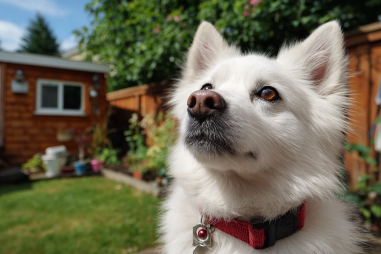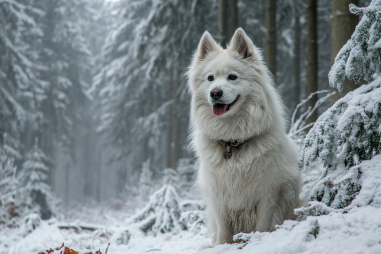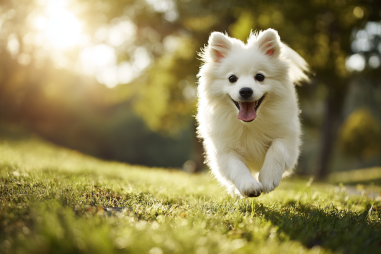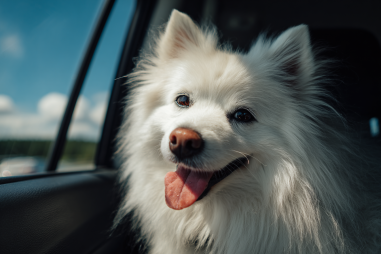Considering bringing an American Eskimo Dog into your apartment? This charming and energetic breed has many qualities that can make them a wonderful companion in smaller living spaces. However, their unique traits and needs require some thoughtful planning. Whether you’re a seasoned apartment dweller or looking to adopt a pup for the first time in a condo, understanding how American Eskimo Dogs adapt to apartment life is essential. In this article, we’ll dive into the breed’s temperament, exercise requirements, noise levels, and training tips—equipping you with everything you need to ensure a happy, healthy environment for your furry friend indoors.
Considerations for Apartment Living with the American Eskimo Dog
The American Eskimo Dog, known for its fluffy white coat and bright eyes, is a medium-sized breed that’s intelligent, alert, and lively. These traits make them naturally prone to curiosity and energy, which apartment dwellers should keep in mind. While they can adapt to apartment life, this breed does best with owners who have time and space to meet their exercise and stimulation needs.
One important consideration is their size. American Eskimo Dogs come in three sizes: toy, miniature, and standard. Toy and miniature Eskies can be ideal for smaller apartments simply due to their size, but all sizes share similar energy levels and mental needs. Additionally, the breed is known for its thick double coat which may require regular grooming, something to consider when living in close quarters with neighbors.
Lastly, this breed is quite social and enjoys interaction with family members or other pets. If you live alone or work long hours, the dog may feel lonely or bored, which can lead to behavioral problems. In short, while apartment living is possible, owners must be committed to fulfilling the dog’s physical and emotional needs.
Exercise and Mental Stimulation Needs Indoors
American Eskimo Dogs are active and intelligent. Without adequate exercise, they can become restless or destructive, which is a challenge in the confined space of an apartment. Fortunately, there are strategies to keep your Eskie both physically and mentally satisfied indoors.
Exercise should include daily walks, but you can also enhance your dog’s routine with interactive play sessions such as fetch in a hallway or tug-of-war with a toy. Mental stimulation is equally important—training sessions, puzzle toys, and scent games can keep their sharp minds engaged.
Because of their agility and intelligence, investing time in teaching tricks, obedience commands, or even agility skills indoors can be very rewarding for both you and your dog. If you have access to a secure indoor play area or nearby dog parks, those outings will greatly benefit their overall well-being.
Handling Barking and Noise Concerns
Barking can be a major concern for apartment residents, and American Eskimo Dogs are known to be quite vocal. They tend to alert their owners of any unusual sounds or visitors, which, while useful at times, can be disruptive in close living quarters. Early training to control barking is crucial.
Implementing positive reinforcement techniques when your dog remains calm and quiet can reduce excessive barking. Providing sufficient mental and physical outlets for their energy will also minimize attention-seeking noise. Additionally, crate training or creating a ‘quiet zone’ within your apartment can help your dog feel secure and reduce barking triggered by anxiety or boredom.
Noise concerns should also include preparation for managing any neighbor feedback. Being proactive in training and maintaining a routine ensures peaceful coexistence with your neighbors.
Creating a Safe Indoor Environment
Safety is paramount for a dog living in an apartment. With the American Eskimo Dog’s curious nature, it’s important to make your home dog-proof to prevent accidents. This includes removing small items that can be swallowed, securing wires, and making sure cleaning supplies are out of reach.
Given their love for jumping and exploring, make sure windows and balconies are secure to prevent falls. Providing a comfortable, dedicated space such as a crate or dog bed can help your dog feel safe and reduce anxiety. Regular grooming is also important to keep their beautiful coat healthy and clean in a smaller space where shedding can be more noticeable.
Socialization and Outdoor Activities
Even though apartment life restricts space, American Eskimo Dogs thrive on social interactions. Regular outdoor activities such as visits to dog parks or neighborhood walks provide opportunities for exercise and socialization. Meeting other dogs and people helps prevent shyness or aggression.
Socialization should start early and continue throughout your dog’s life to keep their friendly and confident temperament intact. If you don’t have easy access to open spaces, arranging playdates with other dogs or attending obedience classes can fill this gap.
Outdoor activities not only fulfill their physical needs but also expose them to various stimuli, helping them stay calm and adaptable indoors.
Training Tips for Apartment Dwellers
Training an American Eskimo Dog in an apartment setting requires consistency, patience, and positive reinforcement. The breed is intelligent and quick to learn but can be sensitive to harsh corrections. Building a trusting relationship based on rewards, praise, and treats works best.
Start with basic commands like “sit,” “stay,” and “quiet,” which are valuable for managing behavior in close quarters. Establishing routines for walks, feeding, and playtime also helps your dog feel secure. Because this breed can become bored easily, varying training routines keeps them engaged.
Crate training is especially helpful in apartments as it gives your dog a secure place to retreat and helps with housebreaking. Teaching your dog to wait calmly when guests arrive or when you answer the door reduces excitement and barking, crucial for maintaining harmony in shared buildings.
When Apartment Living May Not Be Suitable
While many American Eskimo Dogs can thrive in apartments, this setup might not be suitable for everyone. If you have a standard-sized Eskie and limited time for exercise, the breed’s energy may become hard to manage. Similarly, if you or your family are often away for long hours without someone to check in or provide interaction, the dog might develop separation anxiety or destructive behaviors.
Moreover, if your apartment has strict pet policies related to noise, space, or breed-specific restrictions, it might not be the best environment for this vocal and energetic dog. Prospective owners should honestly assess their lifestyle, time availability, and the apartment rules before committing to this breed.
In some cases, a home with a fenced yard or more outdoor space would be a better fit for meeting the American Eskimo Dog’s physical and emotional needs.
Ultimately, American Eskimo Dogs can make wonderful apartment companions with the right preparation and commitment. By understanding their exercise, social, grooming, and training needs, you can create a fulfilling environment for your Eskie in a smaller space. With patience, love, and attention, this intelligent and affectionate breed will thrive and bring joy to your apartment living experience.

